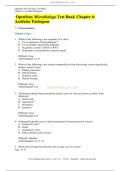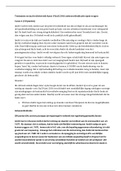Summary
Summary of 'Societal problems as public bads' by Nan Dirk de Graaf
- Course
- Institution
- Book
This is a summary of the book 'Societal problems as public bads' by Nan Dirk de Graaf. All chapters are in it, except chapters 11 and 13, because we didn't need to learn them.
[Show more]













